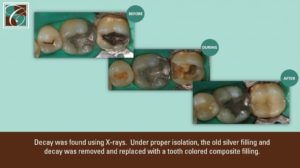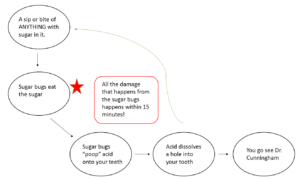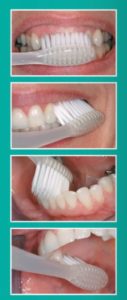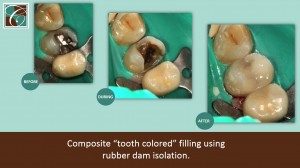Mercury fillings, silver fillings, amalgam fillings, whatever you want to call them, have been around for centuries. They have been, and continue to be a great service to patients. Let’s get straight to my views, then discuss my reasoning behind these views:
1- I do NOT recommend the removal of amalgam (“silver” “mercury”) fillings without a specific reason related to the HEALTH of the TOOTH. I will get to these reasons later.
2- I do NOT place amalgam fillings.
“Ok, so you like silver fillings, but you don’t place them…I’m confused”
Yep, that’s right. I like some amalgams, but if they aren’t placed correctly they can cause damage to the tooth. I don’t place amalgams for a couple of reasons:
1- They are ugly.
2- They are somewhat controversial. Right or wrong, this is another debate.
3- I place composite “tooth colored” fillings very well with rubber dam or isolate isolation (this is absolutely essential to long-term success of tooth-colored fillings).
Here are my reasons for removing some amalgam fillings:
1- Undermined cusp that are causing fractures.
2- Fillings placed very close to the front or back of the tooth that have cracks around them.
3- Chipped or ditched edges.
4- Brown or grey “halo’s” around the fill.
5- Large amounts of ZOE and Dycal (medicine) under the amalgam filling, which is seen on x-ray.
6- And of course, decay is seen visually or on x-ray.
“Do Silver fillings crack teeth?”——-NO. When a tooth is prepared (ie the “cavity” is removed) for an amalgam filling it is prepared in a specific way to make sure the filling stays in place. This preparation can make the tooth more prone to cracking. This doesn’t mean that every tooth with an amalgam filling is going to crack. Some will last forever. Some won’t and can cause big problems.

Here is an example of a silver filling that cracked a tooth due to a large amount of ZOE under it, as well as the undermined cusp. However, the filling behind it is in excellent shape and should last a lifetime.
It is commonly misunderstood that amalgam fillings crack because they shrink and expand with hot and cold drinks or food. In 1976 amalgam fillings went zinc free. Zinc was the component of amalgam fillings that caused the expansion, which caused the cracking. It’s my belief that if you have an amalgam that was placed prior to 1976, leave it alone unless it follows one of my other reasons listed above. If it’s made it this long, it’s probably a safe bet that the expansion and contraction aren’t hurting your tooth.
“So do tooth colored fillings make the tooth stronger?”—-NO. However, we can “bond” tooth-colored filling material to a tooth. This means that we don’t have to place “undercuts” in the tooth that are needed for amalgam fillings. Whenever I replace an amalgam filling I remove the “unsupported/undercut” portion of the tooth. This makes the tooth more predictable.
Bottom line points:
1- All amalgam fillings aren’t bad. Some are.
2- There’s very little “real” evidence that amalgam fillings are bad for your health.
3- I place tooth colored fillings, but it’s very important that these be placed with EXTREME CARE.
Did you find this article useful? Or littered with an abundance of “quotations”? If you would like to discuss your silver fillings please call our Paducah dental office at 270-366-0735.



 DO NOT hold it tight like it’s a tennis racquet. The motion and pressure needed are very minimal, your gums are soft and easily damaged. A gentle “scrub” technique is best.
DO NOT hold it tight like it’s a tennis racquet. The motion and pressure needed are very minimal, your gums are soft and easily damaged. A gentle “scrub” technique is best.
